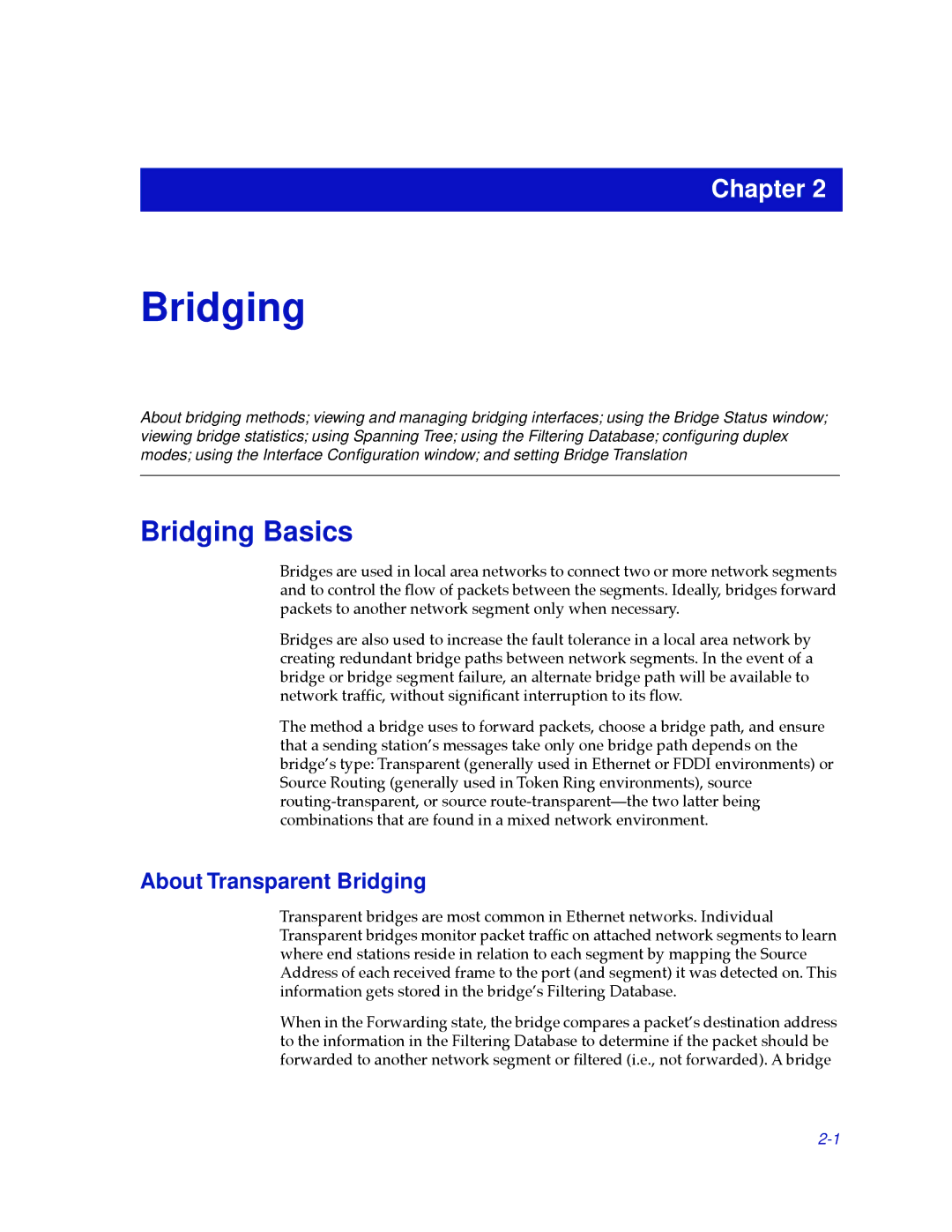
Chapter 2
Bridging
About bridging methods; viewing and managing bridging interfaces; using the Bridge Status window; viewing bridge statistics; using Spanning Tree; using the Filtering Database; configuring duplex modes; using the Interface Configuration window; and setting Bridge Translation
Bridging Basics
Bridges are used in local area networks to connect two or more network segments and to control the ßow of packets between the segments. Ideally, bridges forward packets to another network segment only when necessary.
Bridges are also used to increase the fault tolerance in a local area network by creating redundant bridge paths between network segments. In the event of a bridge or bridge segment failure, an alternate bridge path will be available to network trafÞc, without signiÞcant interruption to its ßow.
The method a bridge uses to forward packets, choose a bridge path, and ensure that a sending stationÕs messages take only one bridge path depends on the bridgeÕs type: Transparent (generally used in Ethernet or FDDI environments) or Source Routing (generally used in Token Ring environments), source
About Transparent Bridging
Transparent bridges are most common in Ethernet networks. Individual Transparent bridges monitor packet trafÞc on attached network segments to learn where end stations reside in relation to each segment by mapping the Source Address of each received frame to the port (and segment) it was detected on. This information gets stored in the bridgeÕs Filtering Database.
When in the Forwarding state, the bridge compares a packetÕs destination address to the information in the Filtering Database to determine if the packet should be forwarded to another network segment or Þltered (i.e., not forwarded). A bridge
